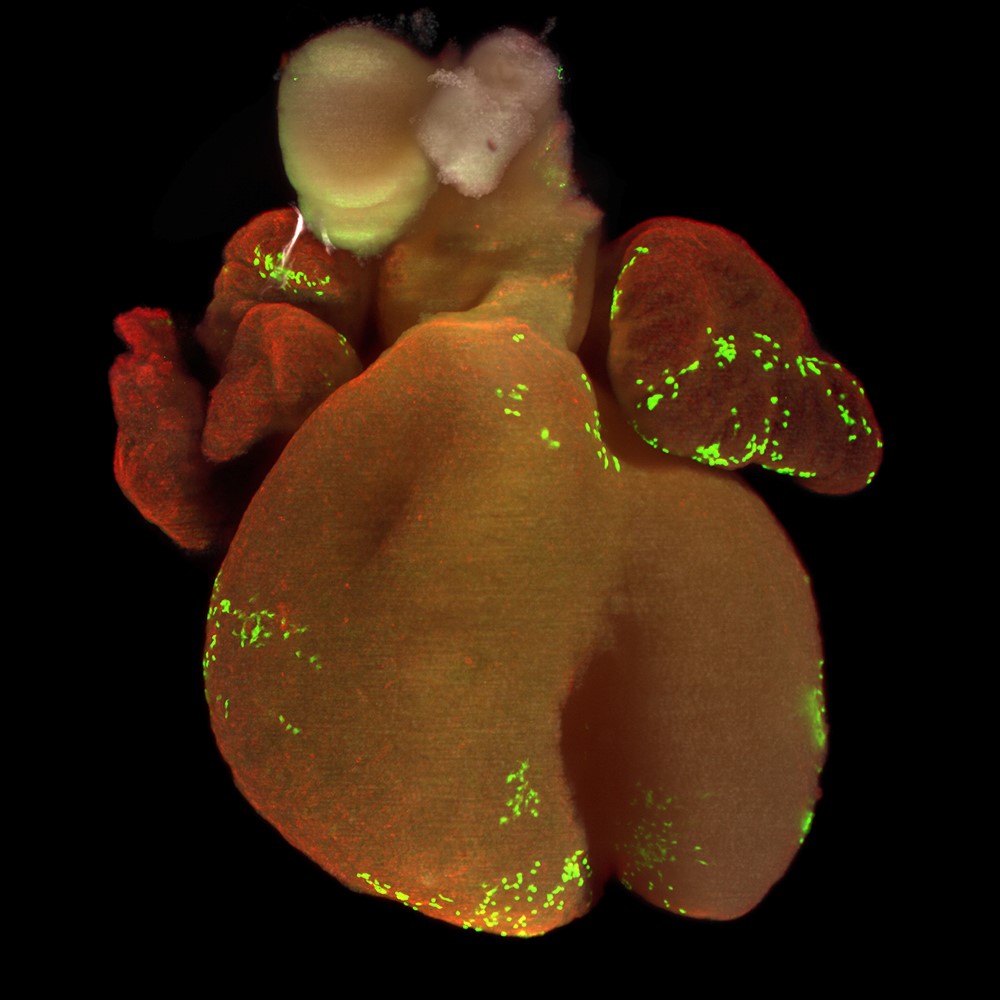Professor Shankar Srinivas, Zeitlyn Fellow and Tutor in Medicine at Jesus College and Professor of Developmental Biology at the University of Oxford, coordinated an international research team that has discovered a new progenitor pool of heart cells that play a vital role in the heart’s development during embryogenesis.
Their findings will contribute to a better understanding of the origin of congenital cardiac defects, and inform the development of regenerative approaches to treating heart disease in the future.
A progenitor cell, like a stem cell, can give rise to other specialised types of cells. However, unlike stem cells, a progenitor cell is not able to continue to divide indefinitely – it is already associated with a particular cellular function in the body. In this case, the progenitor cells give rise to cells of the heart, but the specific type of heart cell has not yet been determined.

Embryonic mouse heart, with some epicardial and myocardial cells labelled in green. Photo Credit: Dr. Richard Tyser, Srinivas Group
In ‘Characterization of a common progenitor pool of the epicardium and myocardium’, published in Science (Vol 371, Issue 6533) in March 2021, the research team, whose members consist of academics from Oxford, Cambridge, Germany and the US, describe how they used cutting-edge research technology to locate and identify a new progenitor pool of cells that differentiate into epicardium cells, that form the outmost layer of the heart.
The heart is the first organ to form during embryonic development but, until now, there has been a limited understanding about the molecular identities of the various types of cells that make up its structure during those early stages, and where in the heart they are located. Shankar and his collaborators used single-cell RNA sequencing, imaging and genetic lineage-labelling to understand the genetic basis by which the various types of cells in the heart form, and to identify the location of the earliest known progenitors of the epicardium – which is an important source of signals and cells during cardiac development and injury.
The discovery provides new insights into how congenital cardiac defects may originate, and will contribute to the development of new regenerative approaches to treating heart disease.
Shankar (below) says, “Roughly one in every hundred babies born requires intervention for a congenital heart disease. Overall, defects in the heart account for approximately 20% of all congenital defects in live births. This new research adds to our understanding of how the heart develops during embryogenesis, and will inform future research in the field. Understanding how the various cells of the heart are formed also opens up new opportunities in regenerative medicine for the treatment of heart disease.”
The group of epicardium progenitor cells that Shankar and his team has identified is located in a part of the early embryo that also contributes to other structures, such as the diaphragm and liver. The researchers are now working to determine if the cells they identified are able to give rise to these other structures, in addition to the epicardium.
Shankar says, “The research we have done so far has used mouse embryos. As part of a UK wide consortium funded by Wellcome, we are now moving on to study the development of the heart directly in human embryos. This exciting effort is a collaboration between my group and that of Paul Riley, another Jesus Fellow, and will help us build on our understanding of the heart as it relates directly to human development.”

